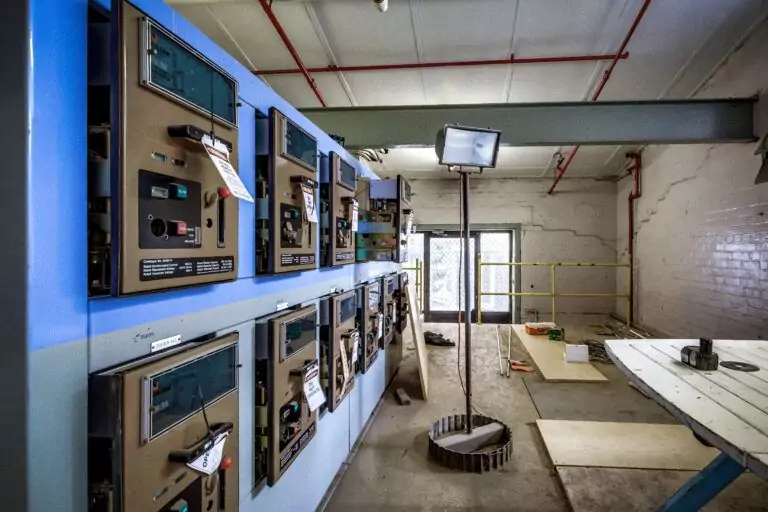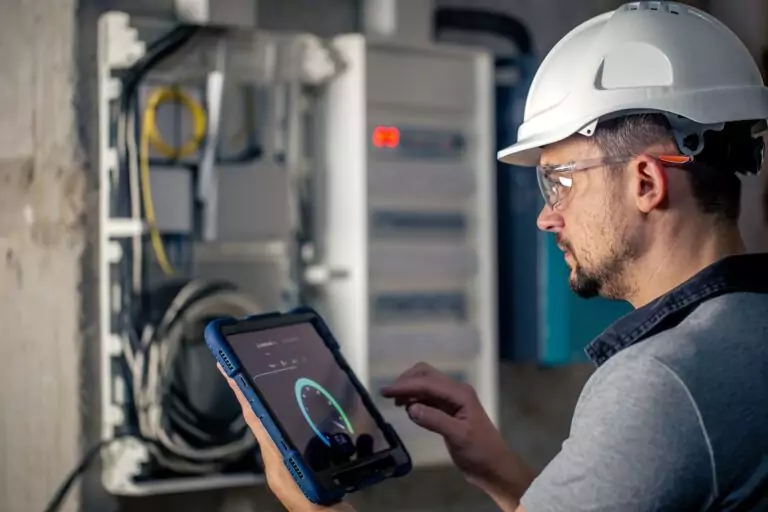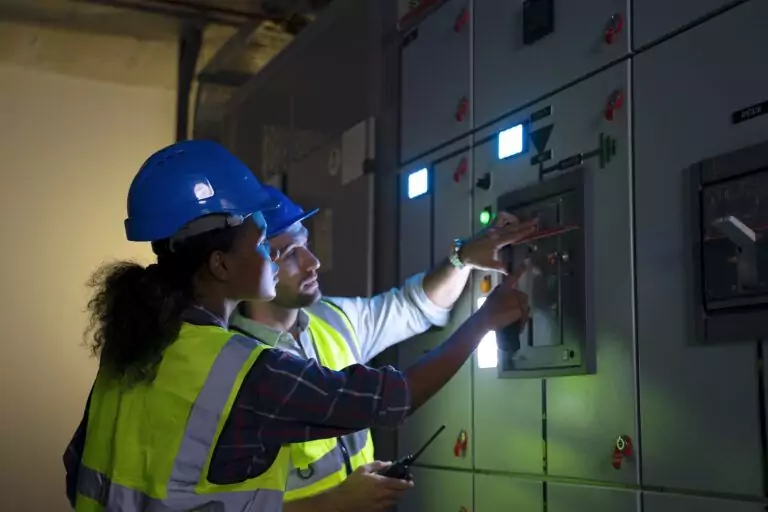Embarking on a career as an electrical designer opens up a world of innovation, creativity, and endless possibilities. These professionals are the backbone of designing electrical systems that power our homes, industries, and everything in between, ensuring safety, efficiency, and compliance with standards. With a plethora of sectors ranging from construction and automotive to telecommunications and renewable energy, the career paths for electrical designers are as varied as they are exciting.
Whether it’s designing the next generation of electric vehicles or developing smart grid technologies, electrical designers are at the forefront of shaping the future. This article delves into the primary career paths, essential skills, and emerging trends in the field, providing a comprehensive guide for those looking to make their mark as electrical designers. Join us as we explore the dynamic and evolving world of electrical design, where innovation meets practical application, leading to a rewarding and impactful career.
What are the Primary Career Paths for an Electrical Designer?
Electrical designers play a crucial role in the planning and development of electrical systems, ensuring that these systems are safe, efficient, and meet the necessary standards. Their expertise is sought in a variety of industries, leading to diverse career paths that cater to different interests and skills within the field. The primary career paths for an electrical designer include:
- Construction and Building Services: Electrical designers in this sector focus on designing electrical systems for new buildings, including residential, commercial, and industrial structures. They work closely with architects and engineers to integrate electrical plans that comply with building codes and regulations.
- Power Generation and Distribution: In this pathway, electrical designers concentrate on the generation, transmission, and distribution of electrical power. They design systems and components for power plants, substations, and renewable energy projects, such as solar or wind farms, ensuring efficient and reliable power delivery.
- Manufacturing and Product Design: Electrical designers in the manufacturing sector develop electrical components and systems for consumer and industrial products. This can range from small household appliances to large industrial machinery, requiring a deep understanding of electrical standards and product design principles.
- Automotive and Transportation: With the rise of electric vehicles and advanced transportation systems, electrical designers are increasingly in demand to create innovative solutions for automotive applications. This includes the design of vehicle electrical systems, charging infrastructure, and onboard electronics.
- Telecommunications: This career path involves designing the infrastructure for telecommunications systems, including fibre optic networks, cellular towers, and satellite communications. Electrical designers in this field work to ensure high-speed, reliable communication networks.
- Research and Development (R&D): Electrical designers in R&D focus on creating new electrical technologies and improving existing ones. This path is ideal for those who are interested in innovation and pushing the boundaries of what’s possible in electrical design.
Each of these career paths offers unique challenges and opportunities for electrical designers. By understanding the specific requirements and trends within these sectors, electrical designers can tailor their skills and knowledge to meet the demands of their chosen field, ensuring a rewarding and successful career.
Power Systems Design
Power systems design is a critical aspect of electrical engineering, focusing on the delivery and optimisation of electrical power:
- Designing Grid Connections for Renewable Energy Sources: Essential for integrating renewable sources like solar and wind into the power grid, ensuring stable and efficient energy distribution.
- Developing Backup Power Systems for Critical Facilities: Vital for creating reliable backup solutions for facilities where constant power is crucial, such as hospitals and data centres.
Electronics Design
Electronics design is at the heart of modern technology, encompassing the creation of electronic devices and systems:
- Creating Consumer Electronic Devices: Involves the innovative design of consumer products, such as smartphones and appliances, blending technology with user needs.
- Designing Embedded Systems for Automotive Applications: Focuses on developing the embedded electronic systems that control various aspects of modern vehicles, from engine management to entertainment systems.
Lighting Design
Lighting design combines aesthetics and functionality to enhance environments:
- Architectural Lighting for Buildings and Landscapes: Concentrates on designing lighting that improves the appearance and utility of architectural and landscape projects.
- Energy-Efficient Lighting Systems: Aims at creating lighting solutions that reduce energy consumption without sacrificing quality, utilising advancements like LED technology and smart controls.
Instrumentation and Control Systems
Instrumentation and control systems are essential for the automated monitoring and management of industrial processes:
- Automation Systems for Manufacturing: Focuses on the design of systems that automate and optimise manufacturing processes, improving efficiency, safety, and quality.
- Control Systems for Environmental Monitoring: Involves designing systems for the accurate monitoring of environmental conditions, such as air and water quality, crucial for environmental protection and compliance.
How to Become an Electrical Designer?
Becoming an electrical designer is a structured process that involves educational qualifications, practical experience, and skill development.
By adhering to these steps, individuals can navigate their way towards a fulfilling career as an electrical designer, equipped to tackle the demands of this dynamic and evolving field.
Obtain a Relevant Degree or Certification
To embark on a career in electrical design, obtaining the right educational background is crucial. A Bachelor’s degree in electrical engineering or technology provides a strong foundation. Enhancing your qualifications with a certification in CAD design further sharpens your design skills, making you a competitive candidate in the field.
Gain Practical Experience
Hands-on experience is invaluable, bridging the gap between theoretical knowledge and practical application. Internships in electrical design firms offer a platform to apply what you’ve learned and gain insight into the day-to-day operations of electrical design. Similarly, securing entry-level positions in engineering teams exposes you to real-world projects, fostering skill development and professional growth in the electrical design arena.
Essential Skills for Success in Electrical Design
Success in the field of electrical design is underpinned by a combination of technical proficiency, industry-standard knowledge, and interpersonal abilities.
These core skills form the foundation for a successful career in electrical design, enabling professionals to contribute to the development of innovative, efficient, and safe electrical systems.
Proficiency in CAD Software
Mastering CAD software is crucial for electrical designers, with AutoCAD and SolidWorks Electrical standing out as key tools. These applications enable the creation of precise and comprehensive electrical schematics, essential for successful design work.
Understanding of Electrical Codes and Standards
A deep understanding of electrical codes and standards is mandatory. Knowledge of the National Electrical Code (NEC) and adherence to IEEE standards are critical to ensuring that designs are safe, efficient, and compliant with industry requirements.
Teamwork and Communication
Teamwork and communication play pivotal roles in the field of electrical design. Collaborating with engineers and architects is essential for integrating electrical designs into larger projects seamlessly. Likewise, presenting designs to stakeholders demands clear and effective communication, ensuring that design intentions are understood and aligned with project goals and stakeholder expectations.
Advancement Opportunities for an Electrical Designer
Career advancement for electrical designers is rich with possibilities, allowing for both professional growth and increased impact within the field. These roles underscore the dynamic career trajectory available to electrical designers, highlighting the potential for significant contributions to technological advancement and industry leadership.
Senior Electrical Designer
As a Senior Electrical Designer, you are at the forefront of leading design projects, applying your depth of experience to navigate complex design challenges. This pivotal role also encompasses mentoring junior designers, guiding them through the intricacies of electrical design and fostering a collaborative environment of growth and innovation.
Project Manager
Stepping into a Project Manager position, you shoulder the responsibility of overseeing project timelines and budgets, ensuring projects are delivered efficiently and cost-effectively. A key aspect of this role is coordinating between clients and design teams, acting as a bridge to ensure that project goals align with client expectations and team capabilities.
Electrical Engineer (with Further Education)
Transitioning to an Electrical Engineer role requires additional education and the achievement of a Professional Engineer (PE) license. This advanced career path opens up opportunities for specialising in a specific field of electrical engineering, allowing you to lead specialised projects and contribute innovative solutions to the engineering community.
Trends Affecting Electrical Design Careers
The field of electrical design is undergoing significant transformations, shaped by several emerging trends. These trends not only highlight the dynamic nature of electrical design careers but also open up avenues for professionals to engage with cutting-edge technologies, driving forward the development of sustainable, intelligent electrical systems.
Renewable Energy Projects
Renewable energy projects are at the forefront of transforming the electrical design landscape, necessitating expertise in solar panel system design and wind farm electrical infrastructure. These initiatives are pivotal in transitioning towards sustainable energy practices, requiring electrical designers to innovate and effectively integrate renewable sources into the broader energy ecosystem.
Smart Grid Technology
The evolution of smart grid technology is central to modernising power distribution, focusing on developing grid automation and management systems. This technology enhances the grid’s efficiency and reliability, which is particularly crucial for the seamless integration of renewable energy sources into the grid.
Internet of Things (IoT) Integration
The Internet of Things (IoT) integration is revolutionising both residential and industrial sectors. Electrical designers play a critical role in designing IoT devices for smart homes, bringing convenience and efficiency to everyday life. Similarly, implementing IoT solutions for industrial automation represents a significant shift towards smarter, more efficient manufacturing processes, showcasing the expanding role of electrical design in driving technological innovation.
Energising the Future Through Design Innovation
From power systems and lighting to IoT integration and smart grid solutions, the world of electrical design offers diverse and impactful career paths. This article has outlined how aspiring designers can build a career filled with innovation, technical mastery, and opportunities for advancement across industries, driving modern progress.
Vista Projects brings over 35 years of integrated engineeringThe process of integrated engineering involves multiple engineering disciplines working in conjunction with other project disciplines to e... expertise, including specialised electrical design solutions that align with evolving industry demands. As a firm committed to sustainable energy and digital transformation, Vista empowers professionals to lead in designing efficient, intelligent electrical systems.
Ready to electrify your career or enhance your next project with cutting-edge design expertise? Connect with Vista Projects today and discover the power of possibilities.









